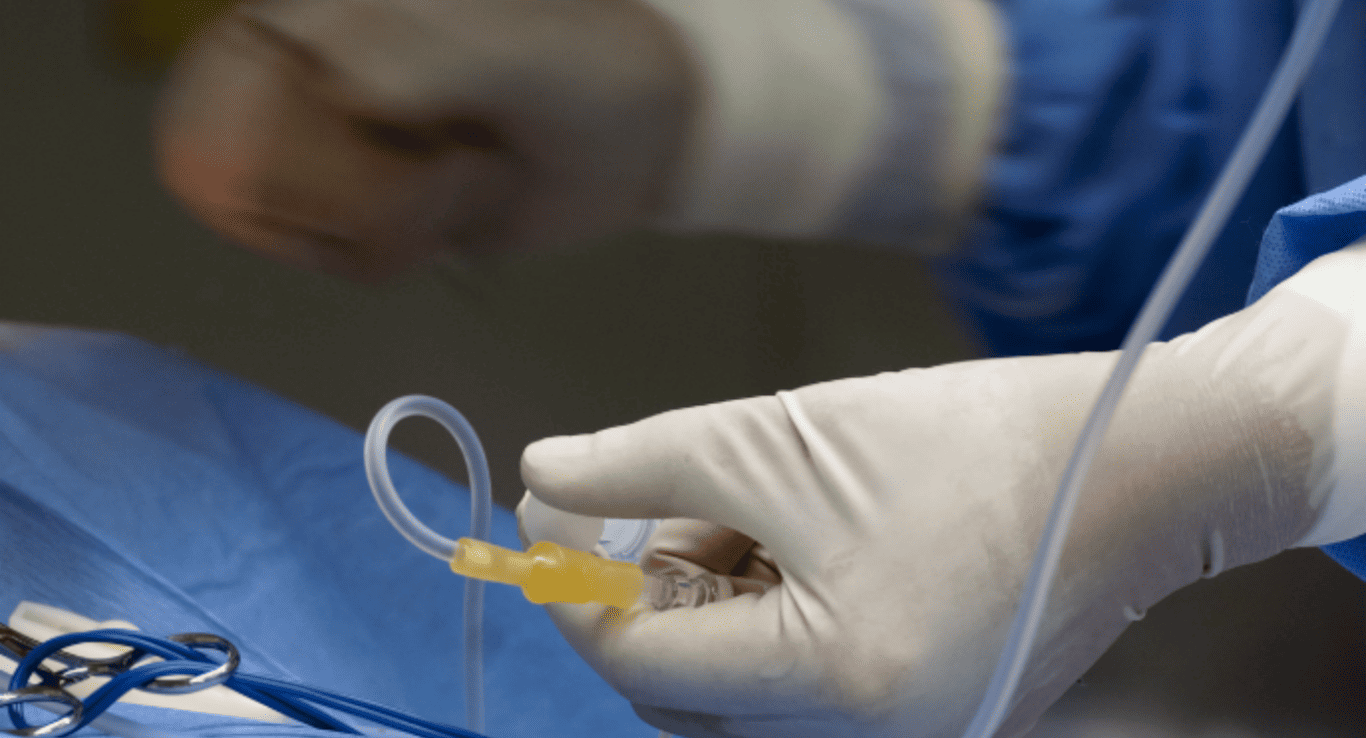Intermittent catheterization (IC) helps males with a variety of urinary problems and drains urine successfully from the bladder. It also can help restore bladder function and reduce the risk of infection by lowering bladder pressure. Today Bever Medical will share detailed information about intermittent catheterization, including when it is appropriate, how to prepare, how to use it, and some practical tips to make the procedure easier and safer. Who Needs Male Intermittent Catheterization? The following people may need male intermittent catheters 1. Neurogenic Bladder Patients with conditions like spinal cord injuries, multiple sclerosis, or Parkinson’s disease often struggle to empty their bladder due to impaired nerve signals. 2. Low-Tension Bladder Atonic bladder muscles may lead to incomplete voiding, increasing the risk of urinary tract infections (UTIs). IC helps reduce residual urine and prevent complications. 3. Overflow Incontinence Caused by conditions like benign prostatic hyperplasia (BPH) or urethral strictures, intermittent catheterization can manage overflow incontinence for patients who are not suitable for surgery. 4. Post-Surgical Needs Patients recovering from pelvic surgeries, such as bladder reconstruction or prostate procedures, may require intermittent catheterization to aid healing and ensure bladder emptying. 5. Bladder Compliance Issues Conditions like diabetes can lead to a high-compliance bladder, requiring periodic drainage to prevent over-distension. Preparing for Intermittent Catheterization To ensure a smooth and hygienic process, proper preparation is essential. Here are the recommended tools and steps: 1. Essential Tools Male intermittent catheters: These catheters are longer than the female urethra, like pre-lubricated, hydrophilic-coated catheters, etc. Lubricants: Water-soluble lubricants make insertion easier and reduce discomfort. Clean cotton wipes: For cleaning the urethral opening before catheterization. Collection container or measuring cup: To collect and measure the drained urine. Sterile gloves (optional) 2. Positioning The patient should adopt a comfortable position. Sitting, standing, or lying down are all suitable, depending on individual preference and mobility. 3. Hygiene Protocol Wash hands thoroughly with soap and water. Clean the urethral opening (meatus) with a cotton wipe, moving from the center outward in a circular motion. Step-by-Step Guide to Male Intermittent Catheterization 1. Insert the Catheter Applying lubricant to the catheter’s tip can reduce friction during insertion. Hold the penis upward at a slight angle, and slowly insert the catheter into the urethra while the patient takes deep breaths to relax. Continue insertion until urine begins to flow. 2. Drain the Bladder Allow the urine to flow completely into the collection container. Gently push the catheter an additional 1–2 cm after urine flow starts until the bladder is fully emptied. 3. Remove the Catheter Once urine flow ceases, slowly and carefully remove the catheter to avoid irritation. 4. Clean the Catheter Rinse the catheter with clean water, ensuring the inner lumen is thoroughly washed. Soak it in a disinfectant solution before storing it in its protective case. Post-Catheterization Care It is critical for preventing infections and maintaining usability through proper catheter management. Adhering to the following tips can help a lot: Replace the disinfectant solution used for soaking catheters daily to maintain sterility. Please replace catheters regularly or as advised by a healthcare professional, even if they appear clean. Conduct regular urine cultures (every 1–3 months) to check for asymptomatic bacteriuria or infections. Common Challenges and How to Address Them 1. Urinary Tract Infections (UTIs) IC reduces the risk of UTIs compared to indwelling catheters. If symptoms like foul-smelling or cloudy urine, lower abdominal pain, or fever appear, consult a healthcare provider promptly. Important: Stay hydrated and follow strict hygiene practices during catheterization. 2. Catheter Insertion Discomfort Ensure adequate lubrication and relaxation during insertion. Water-soluble lubricants are recommended to minimize irritation. 3. Bladder Spasms These may occur occasionally, especially for beginners. Consult a doctor if spasms persist. 4. Difficulty with Self-Catheterization Patients with limited mobility or cognitive impairments may need assistance from caregivers. It is significant to give patients caregiver training to ensure safe and hygienic catheterization. Special Considerations Urethral Abnormalities: Patients with strictures, obstructions, or tumors may require specialized catheters like the Coude catheter, hydrophilic intermittent catheter, etc. Small Bladder Capacity: Those with a bladder capacity below 200 mL might need more frequent catheterization. Post-Surgical Care: Patients with urethral stents or artificial prosthetics should follow specific medical guidelines. Enhancing Convenience with Useful Tools Several accessories can simplify the process of intermittent catheterization for male patients: Pre-Lubricated Catheters: Reduce preparation time and ensure smoother insertion. Urine Measurement Tools: Measuring cups or diaries help track urine output, which is critical for diagnosis and management. Disposable Catheters: For patients at high risk of infection, single-use catheters may be preferable. Conclusion Intermittent catheterization is a safe and effective way to manage bladder dysfunctions in male patients. By using male intermittent catheters and adhering to the right ways, patients can greatly reduce the risk of complications while improving their quality of life. Bever Medical offers OEM intermittent catheters for males and females, they are made of medical material, and designed for optimal comfort and ease of use. Now explore Bever Medical intermittent catheter products and find bladder care solutions here.
View More +-
09 Dec 2024
The surface coating of the catheter can influence the patient's comfort, so it is important to choose the right material and coating to improve patient comfort. Common materials include latex, silicone, PVC, etc. Different materials of catheters have different irritations to the urethral mucosa. They have advantages and disadvantages. If you don't know the characteristics of the material, it is difficult to choose the right material for your patients. Now, let's take a look at them. The Catheter Materials PVC Generally, most patients can tolerate PVC catheters, making PVC the gold standard for catheter materials. PVC catheters are relatively rigid, facilitating easier insertion but offering less comfort. Therefore, they are more affordable and commonly used for single-use catheters. Under body temperature, PVC catheters become softer, but their rigidity may still affect comfort levels. Latex or Rubber The comfort level is moderate, but these materials are unsuitable for patients with allergies, as they may cause urethral irritation. Silicone Silicone is widely used in the medical field due to its high comfort level. However, it is more expensive and is typically used for indwelling catheters. Silicone offers excellent biocompatibility, low allergenicity, and minimal toxicity. It can be sterilized for multiple uses and does not trigger foreign body reactions or inflammatory responses in surrounding tissues when left inside the body. Siliconized Latex This material has moderate toxicity, but the siliconization process reduces the formation of bacterial biofilms, leading to fewer urinary complications. Impact of Coatings Hydrophilic Coating Made from polymers like polyvinylpyrrolidone (PVP), hydrophilic coatings become lubricated when exposed to water. This reduces friction, lowers the risk of urinary tract infections, and significantly enhances patient comfort. Hydrophilic-coated catheters minimize pain during insertion and removal, improving patient acceptance and satisfaction. Non-Hydrophilic Coating (e.g., Gel Coatings) Provides lubrication but may pose risks of allergic reactions or superinfections. Bactiguard Coating Using noble metal alloys (e.g., gold, silver, and palladium), this coating generates microcurrents on the catheter surface, reducing bacterial adhesion and biofilm formation, thereby preventing urinary tract infections. Anti-Latex Coating Materials like silicone or Teflon are used to minimize tissue irritation caused by latex. Antimicrobial Coating Substances like silver ions or chlorhexidine can prevent infections in the short term but may damage patient tissues. Coated or Pre-Lubricated Catheters These significantly reduce friction, provide stable lubrication, and lower the likelihood of urethral injury and infection. Impact of Different Materials on Urethral Mucosa Silicone Highly biocompatible with low toxicity and a smooth surface, silicone helps reduce infection rates and minimizes urethral irritation. It is ideal for long-term catheterization or patients with allergies to other materials. PVC Catheters The material is relatively rigid, making insertion easy. However, its flexibility is not as accommodating as silicone, which may cause slight discomfort with long-term use. PVC catheters are particularly suitable for short-term catheterization. Siliconized Latex Catheters The siliconized surface improves biocompatibility compared to traditional latex catheters. However, it may still cause inflammatory irritation in sensitive individuals or long-term users. Rubber Catheters Especially white rubber catheters, these have higher toxicity levels and may damage the urethral epithelium. They tend to absorb sediment from urine, increasing infection risk and causing inflammatory reactions. Routine use is not recommended and should be limited to special circumstances or short-term emergencies. Material Selection Recommendations Long-Term Use: Silicone catheters are the preferred choice for male intermittent catheters due to their biocompatibility and durability. Short-Term Use: PVC catheters are a cost-effective option with low irritation potential, making them suitable for temporary applications. Budget Constraints or Short-Term Use: Siliconized latex catheters are an option for male intermittent catheters, but they should be avoided for patients with latex allergies. Special Circumstances: Avoid white rubber or standard latex catheters for male intermittent catheter applications unless absolutely necessary. Note: These are general recommendations. For personal selection, patients should consider their individual conditions and consult with a doctor to choose the most suitable catheter material. Which Catheter Material Is Best? Actually, There is no single "best" material for all patients, as individual sensitivities and needs vary. Consider the properties of each material outlined above, along with your specific circumstances, to select the most suitable option. Then, do not forget to consult you healthcare provider, he or she can ensure the best choice for your comfort and safety. Where to Buy Catheter Experts? Bever Medical is committed to provide high-quality catheter products and help you find the most suitable option for your needs. Whether you need standard catheters or customized solutions through our OEM services, we can help you. Any interests, welcome to contact our catheter experts now!
View More + -
13 Dec 2024
Catheters are crucial tools for male patients with blocked urine flow or those who need long-term bladder management. They effectively address urinary problems and greatly improve the quality of life for male patients, helping them avoid the discomfort caused by an inability to urinate. There are three common types of male catheters: straight male catheters, coude catheters, and ready-to-use catheters. Take a look at this article, you can learn more about them and their uses. What Are Male Catheters? Male catheters are medical devices designed specifically for male urination. These narrow tubes are inserted temporarily through the urethra or a stoma into the bladder to drain urine. Usually, male catheters are single-use medical products, which means that they should be discarded after use. Initially, a doctor or nurse may assist with the insertion, but with their guidance, patients will learn how to insert the catheter themselves. It's important to note that sterile catheters are often pre-lubricated, reducing discomfort during insertion. Male Catheter Sizes The size of male intermittent catheters is commonly measured in French (Fr), a standard medical unit for catheter diameter. 1 Fr equals 0.33 millimeters in outer diameter. Since men have longer urethras than women, the common catheter sizes for men are as follows: 12-16 Fr: The most commonly used sizes for adult men. 14 Fr: The standard size, suitable for most patients. 10-12 Fr: Suitable for patients with narrower urethras or first-time catheter users. 18-20 Fr: Used for patients with thicker urine or those requiring blood clot removal; should be guided by a doctor. How to Choose the Right Size? Knowing the patient's urethral diameter is the first step, it ensures smooth catheter insertion, preventing it from being too tight or too loose. Additionally, if the urine contains blood clots or is thick, a larger size catheter may be necessary. Three Types of Male Catheters and Their Uses There are three main types of male intermittent catheters: Straight Catheters, Coude Catheters, and Ready-to-Use Catheters. 1. Straight Male Catheters Straight catheters (uncoated catheters) are the most common type of intermittent catheter. These require lubrication before use due to their lack of coating. They feature a simple straight design, making them suitable for most male patients. Many patients prefer single-use, sterile lubricated jelly for convenience. Use Cases: Post-operative patients who need temporary urination relief. Patients who need to empty their bladder periodically but don't require long-term catheter placement. Advantages: Simple to operate; can be used by patients or caregivers after basic training. Cost-effective, commonly used in healthcare facilities and home care settings. Disadvantages: Can be difficult to insert in patients with curved or obstructed urethras. Requires frequent replacement for short-term use. 2. Coude Catheters Coude catheters have a curved tip, designed for patients with urethral obstructions or curvatures, such as those with benign prostatic hyperplasia (BPH). The curved design helps bypass anatomical obstacles, making it easier to insert the catheter into the bladder. Coude Tip Male Intermittent Catheter Use Cases: Patients with urethral narrowing caused by prostate enlargement. Patients with abnormal urethral structures or scarring post-surgery. Advantages: Solves insertion problems that may occur with straight catheters. Provides greater flexibility and safety for complex cases. Disadvantages: Requires professional knowledge for insertion and removal. More expensive than straight catheters. 3. Ready-to-Use Catheters Ready-to-use catheters are pre-lubricated, therefore, it is more convenient and quick to use, especially when traveling or when patients need a portable solution. Note that these are single-use catheters and should be discarded after use. Ready-To-Use catheter Use Cases: Ideal for travel or situations requiring portability. Suitable for patients who want to reduce the complexity of their catheter use during home care. Advantages: Convenient and hygienic; no need for additional lubrication or cleaning. Reduces the risk of infection, ensuring safe usage. Disadvantages: More expensive, making them less suitable for frequent, long-term use. Environmental concerns due to medical waste generated. Tips for Correct Insertion and Removal Insertion Tips Ensure your hands are clean before inserting and follow the doctor's or the instructions' guidance to insert the catheter slowly. Avoid using excessive force to prevent discomfort or injury. Removal Tips After all urine has been fully drained, then pull out the catheter gently. Regularly Check or Replace the Catheter Patients using catheters long-term should replace the catheter regularly, as recommended by their doctor. Check for blockages or damage, and replace any catheters that are worn out. Which Type of Catheter is Best for Men? Not all male patients are suited for the same type of catheter. Since different people have different body structures and needs, it's essential to choose a catheter that meets your individual needs. Each of these three types of catheters has its specific use cases. For example, straight catheters are ideal for patients needing short-term use, especially those concerned about nursing costs. Coude catheters are better for patients with complex anatomical issues but require more technical support. Ready-to-use catheters are suitable for patients with a high demand for convenience, particularly when traveling or on the go. To improve your life, please consult with your doctor before making a choice. Takeaway The use of male catheters has brought convenience to the lives of many patients. These three common types of catheters each have their own features and suit different patient needs. If you're unsure which to choose, always follow your doctor's advice and guidance. If you're looking to purchase male intermittent catheters, be sure to select a reliable supplier. Bever Medical is committed to providing medical-grade male intermittent products. Our team offers a professional guide to help you with proper care.
View More + -
14 Dec 2024
If you have a narrow or curved urethra, your doctor may recommend using Coudé catheters for daily use. Curved tip designs make insertion easier. There are various materials and degrees of curvature for consideration, so how do you choose the right one? At Bever Medical, we're here to help you find the proper Coudé catheter. About Coudé Catheters Coudé catheters are a type of intermittent catheter with a curved tip designed to facilitate smooth insertion. They are commonly used for intermittent catheterization, helping to insert smoothly, especially suitable for individuals with conditions like urethral strictures or an enlarged prostate. Factors Should Be Consider When Choosing 1. Correct Catheter Size Both diameter and length are crucial. A catheter that is too large may cause damage to the urethra or bladder, while one that is too small can increase the risk of poor drainage and affect the catheter's effectiveness. The length of the catheter should also be chosen based on the patient's body structure to ensure it reaches the target area smoothly, avoiding unnecessary pressure or discomfort. 2. Material The material of the catheter directly affects its comfort, durability, and safety. Common materials include silicone, PVC (polyvinyl chloride), and rubber. Silicone catheters are preferred for their softness and biocompatibility, making them especially suitable for long-term use. They help reduce irritation and allergic reactions in the urethra. PVC catheters are firmer and more suitable for short-term use, though they can be harder, which may cause discomfort for sensitive urethras. Bever Medical offers medical-grade PVC and silicone catheters and provides a guide to help you choose the most appropriate material. We aim to minimize the risk of complications during catheterization. 3. Tip Curvature The curvature of the catheter tip significantly impacts the ease of insertion and its effectiveness. Different angles of curvature are suitable for different clinical needs. For instance, a smaller angle is suitable for straighter urethras, while a larger curve helps navigate around a larger prostate or other obstructions. When selecting a catheter, the curvature should be chosen based on the patient's specific condition. 4. Lubrication Using the right lubricant can significantly reduce discomfort and friction during catheter insertion. It is important to choose lubricants that are non-irritating and biocompatible to ensure patient comfort and safety, especially during long-term use. Lubricants also reduce the risk of infection during catheter insertion. Types of Coudé Tips on Intermittent Catheters Coude Tip Intermittent Catheter Based on the curvature and length, there are three main types: Tapered Tip Coudé Catheters These Coudé catheters feature a longer tapered tip. The tapered tip is easily recognizable by its short and firm curve, which is slightly smaller at the insertion point. Due to its rigidity and shorter curve, this type of catheter generally requires more guiding force to navigate around larger prostates or other blockages. Tiemann Tip Coudé Catheters The Tiemann tip is long and conical with better flexibility. This type of catheter is ideal for navigating narrow passages and bypassing obstructions in more complex pathways. The flexibility of the tip may also provide better comfort during insertion. It is generally more flexible than other Coudé tips, which makes it easier to pass through a constricted urethra. Olive Tip Coudé Catheters This type of catheter has a rounded tip, so it is very suitable for navigating through the bladder and urethra, especially when there are obstructions such as false passages or narrow areas. Its short, rounded tip helps minimize discomfort during insertion, making it the preferred choice in certain clinical scenarios. Coudé catheters come in different levels of rigidity, which can be categorized as soft or hard: Soft Coudé Catheter Soft Coudé catheters are made from flexible materials and designs, making them more adaptable during insertion. They are ideal for patients with fragile, sensitive, or traumatized urethras. They reduce pressure on tissues, thus alleviating discomfort during the insertion process. This makes them especially suitable for patients with chronic conditions or urethral inflammation. Due to their flexibility, soft catheters better conform to the natural curve of the urethra, offering greater comfort. Therefore, for patients requiring long-term catheterization, a soft catheter is the best choice to avoid damage to the urethra and bladder. Hard Coudé Catheter Hard Coudé catheters are typically made from stiffer materials, such as metal or hard plastic, giving them higher rigidity and stronger guiding force. This makes them suitable for navigating complex, narrow, or curved anatomical structures. They are particularly effective for patients with significant blockages in the urethra or bladder, as they can bypass enlarged prostates or navigate through a constricted urethra. Hard catheters are especially useful in situations that require precise navigation, as they help guide the catheter through complex pathways. Best Practices for Maintaining Catheters Inspect the Catheter Check the catheter regularly for any damage or deformation, particularly at the tip. If you notice cracks or signs of wear, please replace the catheter immediately to ensure safe usage. Storage Conditions When not in use, catheters should be stored in a clean, sterile environment. Avoid exposing them to high temperatures or excessive humidity, as these conditions can promote bacterial growth. Are Coudé Catheters Covered by Insurance? Yes, in most cases. If patients need long-term catheterization and with urethral strictures, or other urinary system conditions, doctors will recommend Coudé catheters. It makes them eligible for reimbursement. However, insurance policies vary by region, so it’s best to confirm with your insurance provider beforehand. Conclusion By following these mentioned practical tips, you can choose the right Coudé catheters by considering materials, types, sizes, etc. Bever Medical offers high-quality Coudé catheter options for medical institutions and individual users, including Hydrophilic Coudé intermittent catheters and Coudé tip intermittent catheters. If you buy it for yourself, please provide a doctor’s prescription to minimize the risks of using the wrong catheter. Related Blogs How To Place A Coude Catheter? The Differences Between Straight Tip and Coude Tip Catheters How to Use a Coudé Catheter?
View More + -
24 Dec 2024
Intermittent catheters are an effective solution for helping patients empty their bladders. However, different types of catheters are suitable for different patients, and the right one is crucial for enhancing comfort and reducing the risk of infections. This article will share the main types of intermittent catheters, and their features. You can also learn about some useful solutions at Bever Medical. Challenges Patients Face When Choosing Catheters 1. Discomfort During Use Many standard catheters can cause pain or urethral friction during insertion, especially if they lack coating or sufficient lubrication. This discomfort can discourage patients from using them regularly, potentially leading to psychological stress over time. 2. Risk of Infections Urinary tract infections (UTIs) are a common complication associated with catheter use, especially if the product design is inadequate or the patient cannot use it properly. 3. Suitability and Convenience Differences in the urinary tract structure between genders and individuals make using unsuitable catheters ineffective or even harmful. Moreover, some patients need catheters that are easy to use independently, whether at home or while traveling. 4. Privacy and Independence Many patients prefer to perform the catheterization process independently without the assistance of healthcare professionals to maintain their privacy. 5. Budget Constraints High-quality medical devices often come with a hefty price tag, but patients seek products that are both budget-friendly and safe to use. How to Choose the Right Intermittent Catheter for You 1. Consider Gender and Urethral Anatomy Female patients typically benefit from shorter, straight-tip catheters. Male patients may prefer coude-tip designs to accommodate longer urethras. 2. Focus on Comfort and Infection Risk For frequent use or sensitive skin, hydrophilic-coated catheters are recommended. 3. Choose Based on Use Case For everyday convenience: Opt for simple straight-tip designs. For medical-specific needs: Coude-tip designs are better. 4. Balance Budget and Quality Bever Medical offers high-quality products at various price points to suit different budgets. Bever Medical Intermittent Catheter Solutions Bever Medical is committed to providing high-quality intermittent catheters with a focus on patient experience while catering to both medical institutions and individual users. All catheters are made from medical-grade materials that meet international standards, ensuring safety and reliability. Many of our products feature hydrophilic coatings, offering lubrication that minimizes discomfort and infection risks. Here are some of our most popular options: 1. Hydrophilic Intermittent Catheter Female This catheter features a hydrophilic coating that activates with water, eliminating the need for additional lubrication. Its length is tailored for women, reducing pain and urethral irritation during catheterization. The coating minimizes friction, enhancing overall comfort. Hydrophilic Intermittent Catheter Female 2. Straight Tip Female Intermittent Catheter Designed with simplicity in mind, this straight-tip catheter is easy to insert. It is an affordable choice, making it ideal for basic medical needs. Best suited for short-term use or patients without specific lubrication requirements. Straight Tip Female Intermittent Catheter 3. Coude Tip Male Intermittent Catheter Straight-tip catheters can be challenging to insert for some patients. The coude-tip design is specifically tailored for the longer and curved male urethra. It ensures smoother insertion, particularly for patients with complex urethral structures or enlarged prostates. In addition to these popular options, Bever Medical supports OEM services for medical institutions and brands, offering customization in catheter lengths, coating types, and packaging specifications. With a wide range of price range, we cater to both individual users and bulk purchases by healthcare facilities. Coude Tip Male Intermittent Catheter Conclusion When it comes to selecting the right intermittent catheter, it is a process that requires careful consideration of individual patient needs. Which is best? Such one is according to patients specific needs and real situations. Bever Medical offers a wide range of catheter products, from short, straight designs for women to coude tips tailored for patients. Whether you need hydrophilic coatings for comfort or a simple, budget-friendly solution, Bever Medical is dedicated to meeting your needs while reducing discomfort and infection risks. Any interests, check them out now at Bever Medical.
View More + -
26 Dec 2024
For many patients who cannot urinate naturally, an intermittent catheter can be a true lifesaver in their daily lives. Among these, straight catheters are particularly suitable for patients whose bladders cannot empty on their own, significantly improving their quality of life. Bever Medical shares straight catheter uses, working principles, and types to help patients select the right product for their needs. What Is a Straight Catheter? A straight catheter is one type of intermittent catheter, with a hollow tube design and soft material, typically made of plastic (PVC) or rubber. Also, it is designed for single use, so must throw it after use to reduce the risk of infection. It is essential for patients whose bladders cannot empty on their own. How Does a Straight Catheter Work? Gently insert a straight catheter into the bladder through the urethra. Urine flows from the bladder through small openings called eyelets into the catheter funnel and is then drained into a container or designated area. After the bladder is emptied, you can remove the catheter carefully. This eliminates the need for additional equipment, making it a lightweight and convenient option. Why Would a Patient Need a Straight Catheter? Patients may require a straight catheter under the following circumstances: 1. Overflow Incontinence When the bladder becomes overfilled with urine, it can lead to uncontrolled leakage. A straight catheter helps empty the bladder and prevents retained urine from causing infections. 2. Neurological Conditions Certain nerve damage, such as spinal cord injuries or multiple sclerosis, can impair bladder function, making it difficult or impossible for patients to urinate naturally. 3. Post-Surgical Recovery After certain urological surgeries, patients may need a straight catheter for short-term use to aid in bladder recovery. 4. Bladder Dysfunction Patients with bladder dysfunction often face difficulty urinating or have weakened bladder muscles, necessitating intermittent catheterization. Types of Straight Catheters Straight catheters come in various designs to meet the needs of different patients. Below are some common types: 1. Standard PVC Catheters Made of plastic with moderate stiffness, these catheters feature color-coded funnels for French size identification. They are suitable for most patients. 2. Red Rubber Catheters Crafted from softer red rubber, these catheters offer greater flexibility. Although they do not have a funnel, they are more comfortable for patients with sensitive urethras. 3. Coude Catheters These catheters have a curved or tapered tip, making them ideal for navigating obstructions in the urethra and particularly beneficial for patients with a narrow urethra. Advantages of Using Straight Catheters 1. Reduced Risk of Infection Using a new catheter each time significantly lowers the likelihood of urinary tract infections (UTIs). 2. Convenient and Lightweight Straight catheters do not require long-term wear, allowing patients to carry on with daily activities without hindrance. 3. Versatile Applications Suitable for various medical needs, straight catheters can be used by men, women, and children alike. 4. Cost-Effective Most insurance plans cover the cost of straight catheters, enabling patients to access high-quality products affordably. How to Choose the Right Catheter for You Straight catheters play a crucial role in improving patients' health and quality of life. It is wise to follow a doctor's suggestions, they always recommend the right catheter based on the patient's specific urethral condition. Bever Medical offers a wide range of straight catheters and can recommend the best product based on your doctor's advice. Whether you are using a catheter for the first time or need a more specialized product and service, Bever Medical is here to provide professional solutions. If you are looking for a reliable, patient-centered care product, we make your daily life easier.
View More +








